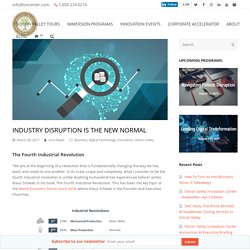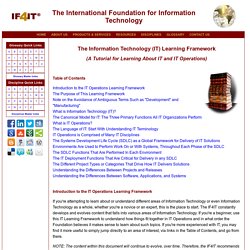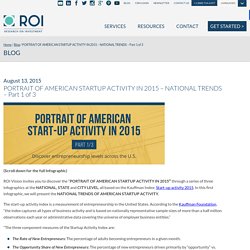

The Pillar Project announces a new community to help young people change the world.

Background: In 2017, the Pillar Project was created to give people a platform for owning and using their own data using blockchain technology. Our ultimate goal is to create a new operating system for the 21st century — an alternative to Apple and Android. In 2018, regulators and bureaucrats made it clear that innovation will be done using 20th-century laws and standards. We are expanding the scope of our enthusiastic Pillar community to address fundamental problems we see with society and the changes necessary to empower individuals. This is our message … The world we have today is fantastic for rich people and wealthy nations. The architecture of our digital world is based on old paper models from the 19th and 20th centuries. At the same time, the world is not as bad as most of us think. There are big things that need fixing, yet it’s very tricky to know what’s really important and which tools to use.
The Fourth Industrial Revolution “We are at the beginning of a revolution that is fundamentally changing the way we live, work, and relate to one another.

In its scale, scope and complexity, what I consider to be the fourth industrial revolution is unlike anything humankind has experienced before” writes Klaus Schwab in his book, The Fourth Industrial Revolution. This has been the key topic at the World Economic Forum since 2016, where Klaus Schwab is the Founder and Executive Chairman. Technology professionals are creating these days new products and services by leveraging the latest generation of technologies such as Internet of Things (IoT), Virtual Reality (VR), Bitcoin, Big Data, Artificial Intelligence (AI), Autonomous Vehicles, Robotics, Nanotechnology, 3D Printing, Genomics and Bionics. What is different this time is that physical, digital and biological worlds are merging with each other and creating a new world of Cyber-Physical Systems.
Artificial Intelligence. Jim's take on Presence - Pathways to Liberation. Presence For me, if there is one skill underlying all of the others presented in these pathways to liberation, it is presence.

Without presence, we can not deliberately engage the other skills because we lack real-time awareness; similarly, the practice of the other skills support the cultivation of presence. Presence is the foundational skill of maintaining moment by moment awareness of our unique personal human experience. With insufficient presence, our “aliveness” falters and suffering results. For me, presence is an ever-increasing openness to the immediacy of experience, (i. e. what I see, hear, smell, taste, touch; from both external and internal sources).
The state of presence is characterized by a consciousness that is tuned in to what is actually happening, focusing clearly on the ever-changing flow of life. Sometimes, we can clarify our understanding of a concept or experience by noticing its opposite. Noticing absence stimulates presence. Table of Contents Introduction to the IT Operations Learning FrameworkThe Purpose of This Learning FrameworkNote on the Avoidance of Ambiguous Terms Such as "Development" and "Manufacturing"What is Information Technology (IT)?

The Canonical Model for IT: The Three Primary Functions All IT Organizations PerformWhat is IT Operations? The Language of IT: Start With Understanding IT TerminologyIT Operations is Comprised of Many IT DisciplinesThe Systems Development Life Cycle (SDLC) as a Global Framework for Delivery of IT SolutionsEnvironments Are Used to Perform Work On or With Systems, Throughout Each Phase of the SDLCThe SDLC Functions That Are Performed In Each EnvironmentThe IT Deployment Functions That Are Critical for Delivery in any SDLCThe Different Project Types or Categories That Drive How IT Delivers SolutionsUnderstanding the Differences Between Projects and ReleasesUnderstanding the Differences Between Software, Applications, and Systems.
(Scroll down for the full Infographic) ROI Vision invites you to discover the “PORTRAIT OF AMERICAN STARTUP ACTIVITY IN 2015″ through a series of three infographics at the NATIONAL, STATE and CITY LEVEL, all based on the Kauffman Index: Start-up activity 2015.

In this first infographic, we will present the NATIONAL TRENDS OF AMERICAN STARTUP ACTIVITY. The start-up activity index is a measurement of entrepreneurship in the United States. Constructive Developmental Theories of Thinking. Leadership Competencies Development. Much has been made recently of the imperative to fully transition our businesses into the modern digital world.

It now hardly needs to be said at this point. There is even some encouraging news for traditional enterprises: The latest data from Forrester shows that companies are indeed at long last making digital transformation a top priority, with 74% of executives saying that they currently have a strategy to get there. Yet “having a digital strategy” can also mean just about anything, depending upon who you ask. At this point however, there are basically two main forks in the road to digital for most organizations: There is the ‘bolt-on’ strategy, which typically means adding a few new digital channels to existing touchpoints — typically social and mobile — and maybe creating an associated but minor sideline business with some digital revenue. Then there is the ‘digital transformation’ approach to digital. Many industries even today are resistant to digital.
Seek out digital change. Customer Service.
Strategy. Training. Leadership 1. Brand. University. Leadership 2. TOC Thinkers. Benefits.